Across the vast and varied landscapes of America’s national parks, some plants exist nowhere else on Earth. From high alpine meadows to scorching desert valleys, these rare and resilient species have adapted to thrive in unique ecosystems, protected by the very parks that shelter them. Their survival tells a story not only of biodiversity but also of conservation, climate, and natural heritage.
In this list, we highlight 25 truly iconic plants—many of them endemic, endangered, or ecologically vital—found exclusively within the boundaries of U.S. national parks. Whether you’re a curious traveler, a native plant enthusiast, or a garden lover looking for inspiration, these botanical treasures offer a glimpse into nature’s most exclusive sanctuaries.
Joshua Tree
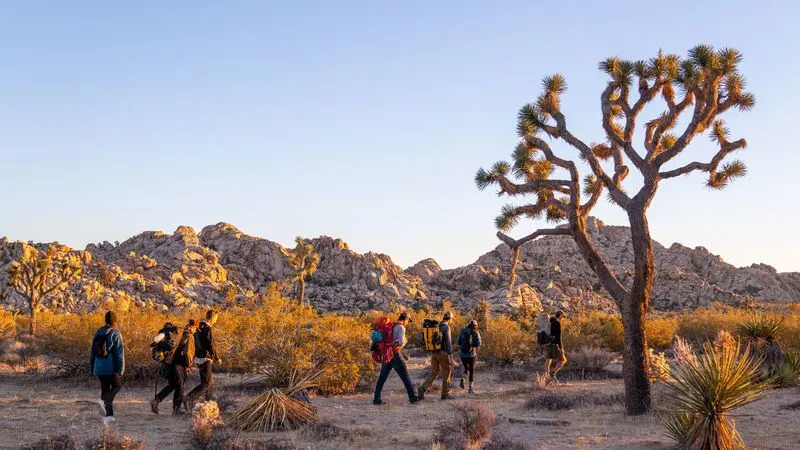
In the heart of California’s Mojave Desert, the Joshua Tree commands attention with its gnarled branches and spiky leaves. Named by Mormon settlers who saw the biblical figure Joshua in its outstretched arms, this tree is a symbol of resilience. Its unique silhouette against the desert sky is both haunting and mesmerizing. Visitors to Joshua Tree National Park are often captivated by its stark beauty.
Known to thrive in harsh, arid environments, it provides shade and shelter to many desert species. This iconic tree is more than just a plant; it’s a testament to nature’s adaptability and strength.
Saguaro Cactus
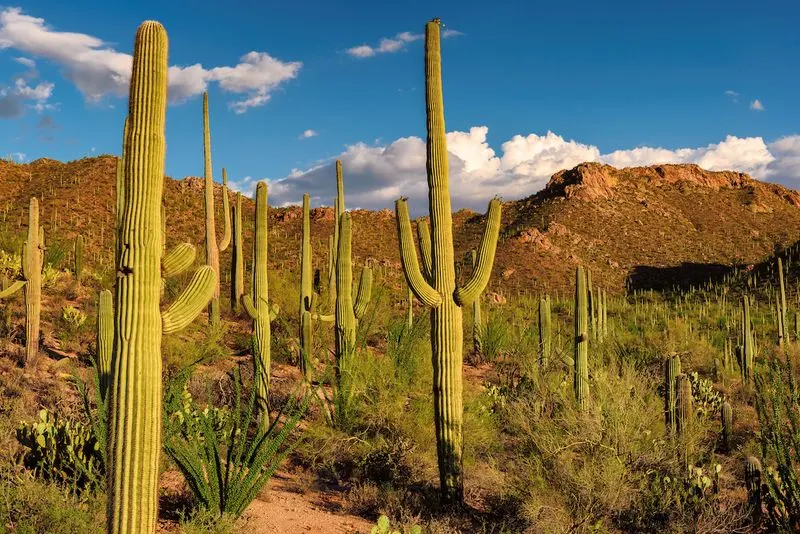
Majestic and towering, the saguaro cactus stands as the quintessential symbol of the American Southwest. Found primarily in the Sonoran Desert and celebrated for its grand stature, these cacti can grow over 40 feet tall and live for more than 150 years. Their presence in Saguaro National Park is nothing short of iconic.
Each arm of the saguaro tells a story of survival and growth, supporting a diverse range of wildlife, from nesting birds to tiny insects. As the desert blooms around them, saguaros remain steadfast, a testament to the enduring spirit of the desert.
Bristlecone Pine
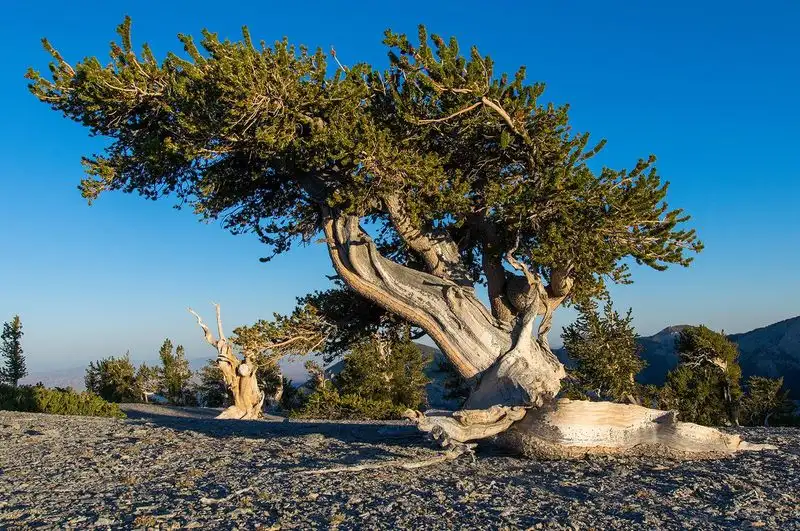
In the White Mountains of California stands the Bristlecone Pine, one of the oldest living organisms on Earth. These ancient trees have weathered thousands of years, with some over 5,000 years old. Their twisted trunks and gnarled branches narrate tales of resilience amid the harshest of climates.
The wood is dense and resistant to decay, allowing these trees to survive where few others can. Each ring tells a chapter of history, a timeline of survival against all odds. Visiting these pines is like stepping back through the pages of time itself.
Redwood
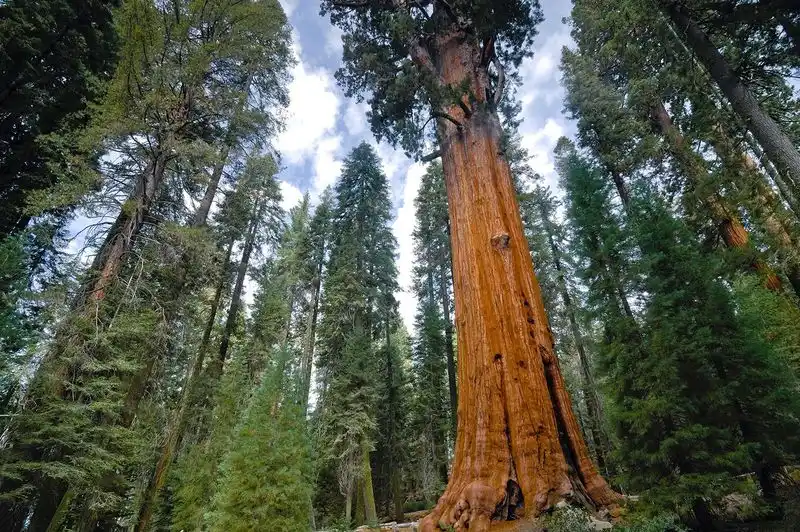
Among the ancient forests of California, redwoods reach skyward, cloaked in mist and mystery. These giants are among the tallest trees on earth, with some surpassing 350 feet. Walking among them in Redwood National Park, one can’t help but feel a sense of awe.
Their thick bark protects them from fire, insects, and decay, a testament to their enduring nature. These trees create an ecosystem that supports countless species, a green cathedral of life. It’s a reminder of the grandeur that nature can achieve when left to its own devices.
Sequoia
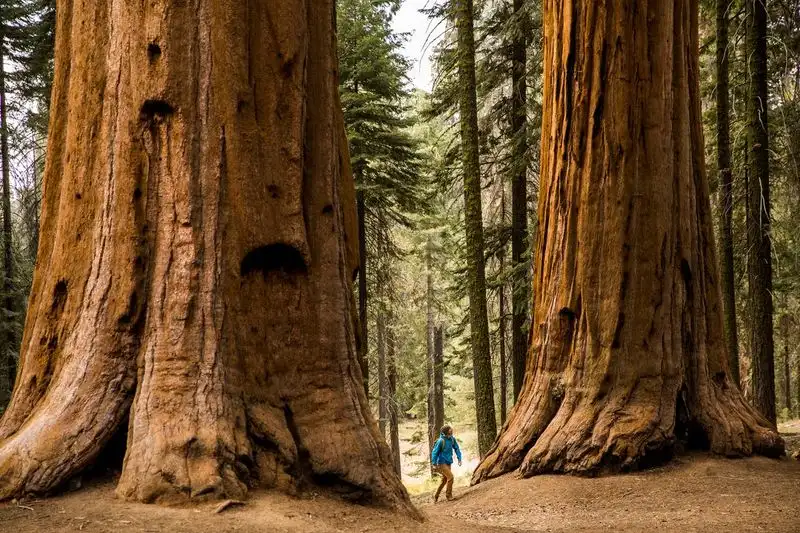
In Sequoia National Park, the mighty sequoias command respect with trunks so thick they defy belief. These colossal trees are among the largest organisms on the planet, with some weighing over 6,000 tons. Their sheer size is a marvel to behold.
Sequoias have evolved to withstand fire, which is crucial to their regeneration process. They tower over the forest floor, hosting an array of life within their towering canopies. To stand in their presence is to witness the grandeur of nature, silent yet profoundly powerful.
Giant Sequoia
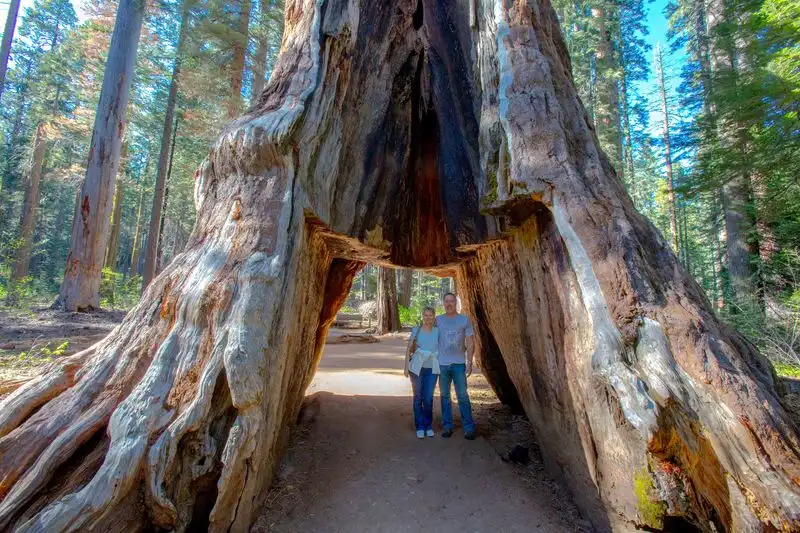
The giant sequoias of Sequoia National Park are the titans of the tree world, standing as symbols of resilience and timelessness. With their massive trunks wrapped in thick, reddish bark, these trees seem almost immortal.
They can live for thousands of years, fostering entire ecosystems in their shadow. Their impressive girth and height inspire awe, making them a natural wonder and a testament to the might of the natural world. A visit to these sentinels of the forest is an unforgettable experience.
Cabbage Palmetto
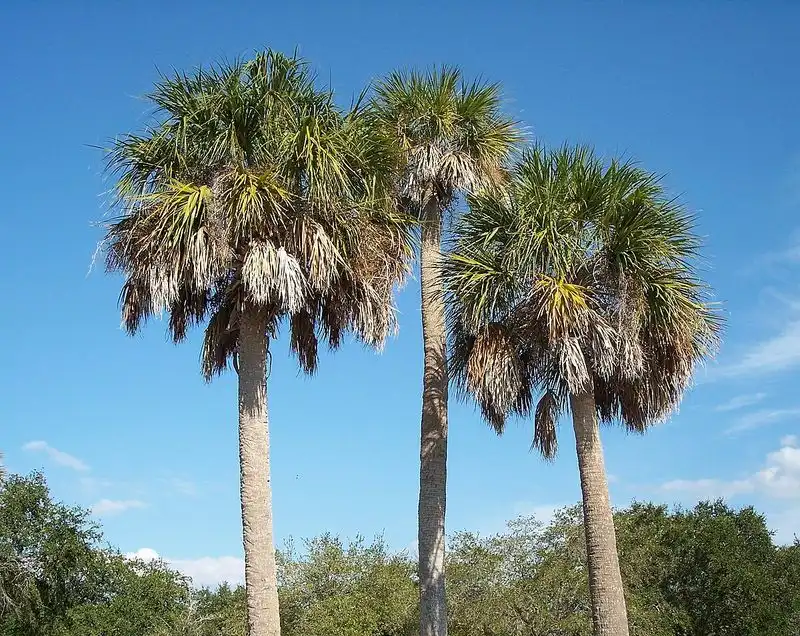
Swaying gently along the coastal regions of the Everglades National Park, the Cabbage Palmetto embodies the laid-back spirit of Florida’s landscapes. Known for its fan-shaped leaves and sturdy trunk, it’s an emblem of warmth and resilience.
This tree supports a variety of wildlife, providing both food and shelter. It thrives in sandy soils and can withstand hurricanes, a true survivor of the coastal climate. Its presence along Florida’s coastlines is a reminder of the symbiotic relationship between land and sea.
Ponderosa Pine
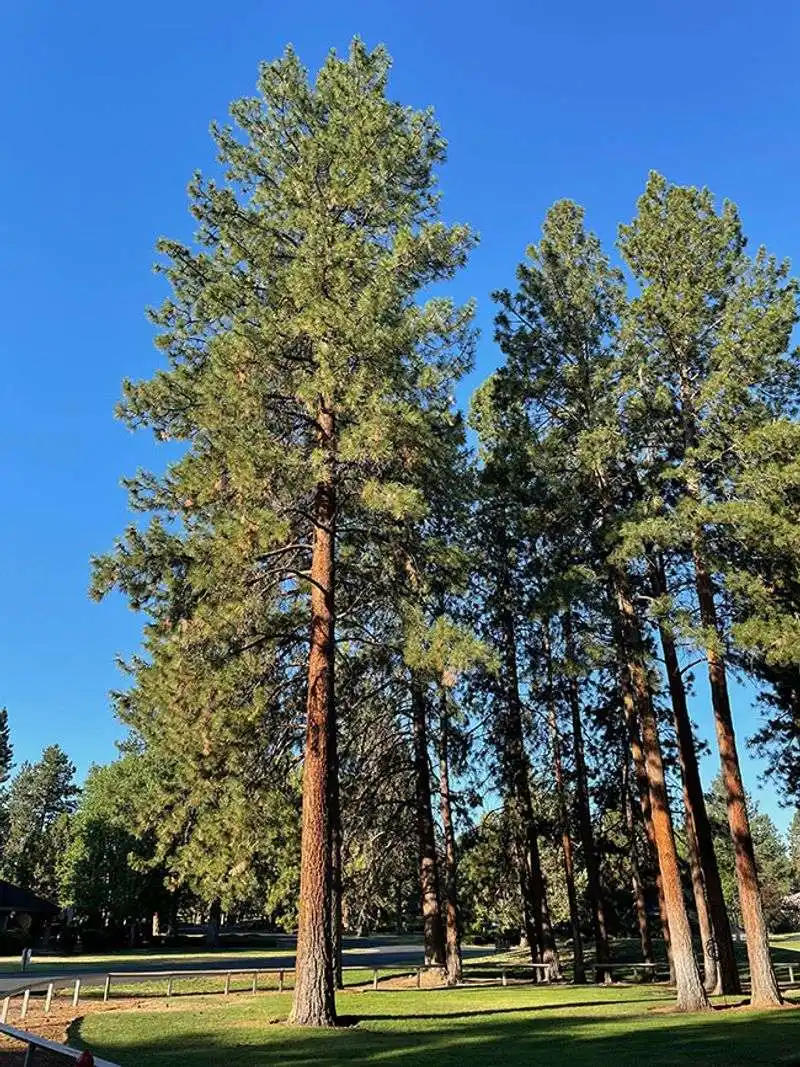
With its distinctive orange-brown bark and towering presence, the Ponderosa Pine is a familiar sight in the Rocky Mountain National Park. Its vanilla-scented bark offers a sensory delight, inviting visitors to get up close.
These stately trees thrive in sunny, dry climates and play a vital role in their ecosystems. Their deep roots stabilize the soil, and their needles provide habitat for numerous species. The Ponderosa Pine stands as a testament to adaptability and the beauty of rugged landscapes.
Joshua Tree Yucca
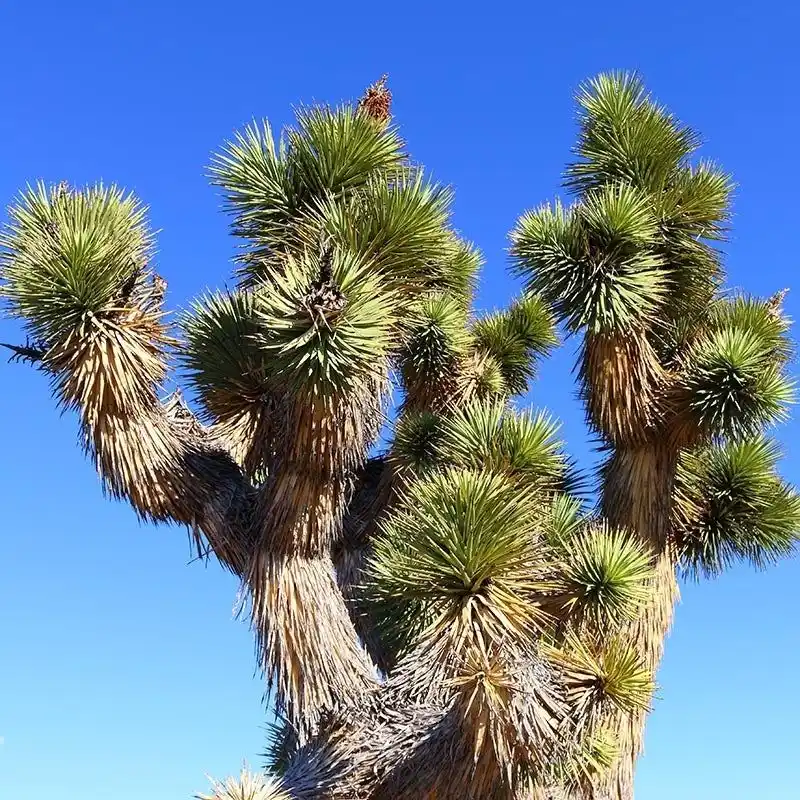
Distinct and dramatic, the Joshua Tree yucca defines the skyline of its namesake national park. Its spiky leaves and twisted branches paint an unforgettable picture against the arid backdrop.
This tree has evolved to survive in one of the harshest climates, with roots that tap deep into the earth. It’s a crucial part of the desert ecosystem, providing habitat and food for a variety of species. Its silhouette against the desert sunset is a sight that remains etched in the memory.
Bald Cypress
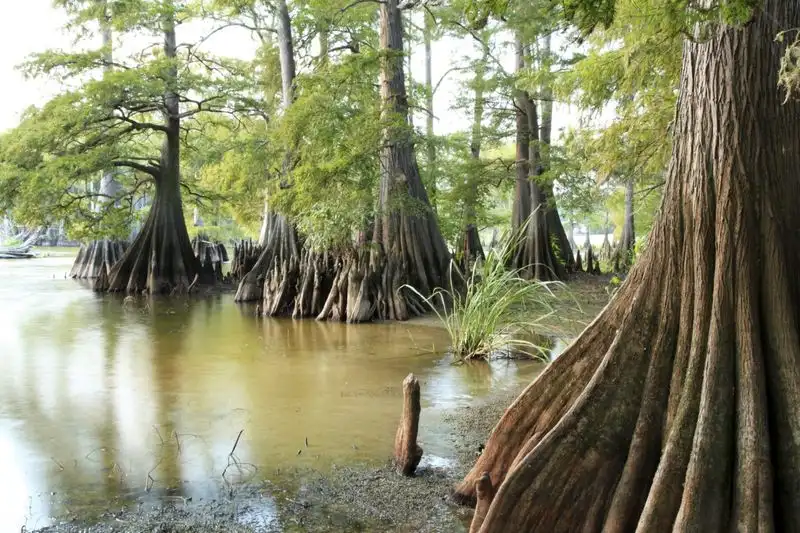
Rooted in the swamp waters of the Everglades, the Bald Cypress stands tall with its knees breaking through the surface. Known for its resilience in watery environments, this tree is often draped in Spanish moss, adding to its mystique.
The Bald Cypress plays a critical role in its habitat, providing stability and shelter for numerous aquatic species. Its presence is a testament to the adaptability of life in the wetlands. Observing these trees is like stepping into a world where time stands still.
Coast Redwood

Enveloped in fog, the Coast Redwood trees of Redwood National Park create a mystical atmosphere. These towering giants can grow over 300 feet tall, their trunks thick and resilient.
The forest floor beneath them teems with life, supported by the trees’ shade and nutrients. The redwoods’ ability to capture and hold fog moisture allows them to thrive in their coastal habitat. A walk among these giants is a humbling experience, offering a glimpse into the delicate balance of nature.
Engelmann Spruce
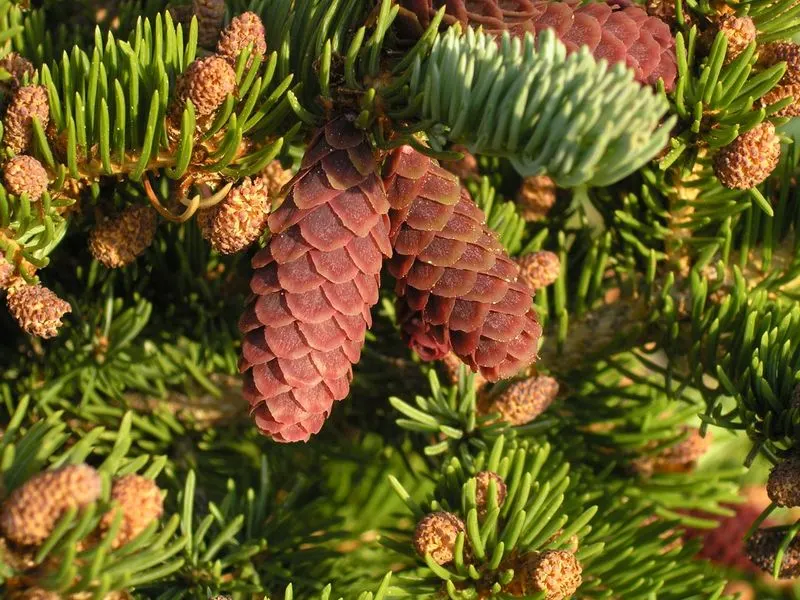
In the high altitudes of the Rockies, the Engelmann Spruce stands resilient against the chill. Its pyramid shape and blue-green needles make it a picturesque sight, especially when dusted with snow.
This evergreen thrives in cold climates, playing a vital role in mountainous ecosystems. Its wood is valued for its strength and is often used in musical instruments. The Engelmann Spruce symbolizes endurance and beauty in adversity, a true emblem of alpine wilderness.
Pitcher Plant

With their tubular leaves and vibrant colors, Pitcher Plants captivate visitors to Great Smoky Mountains National Park. These carnivorous plants lure insects into their traps, showcasing a fascinating adaptation for survival.
Found in nutrient-poor soils, they have evolved to derive essential nutrients from their prey. Their unique shape and coloration make them a standout amongst the park’s diverse flora. Observing these plants offers a glimpse into the innovative strategies of nature.
Yucca brevifolia
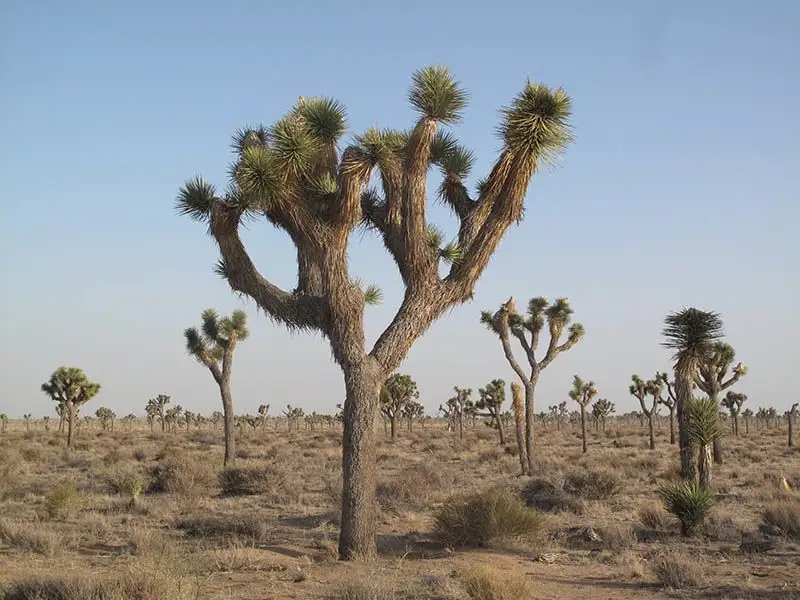
Yucca brevifolia, better known as the Joshua Tree, is a remarkable sight in the desert landscape. Its dagger-like leaves and twisted branches form an iconic image under the vast desert sky.
This plant thrives in the arid conditions of its namesake national park, supporting a delicate desert ecosystem. Its presence is a reminder of the tenacity of life in challenging environments. As the stars emerge, these trees create a surreal landscape, bridging earth and sky.
Blue Palo Verde
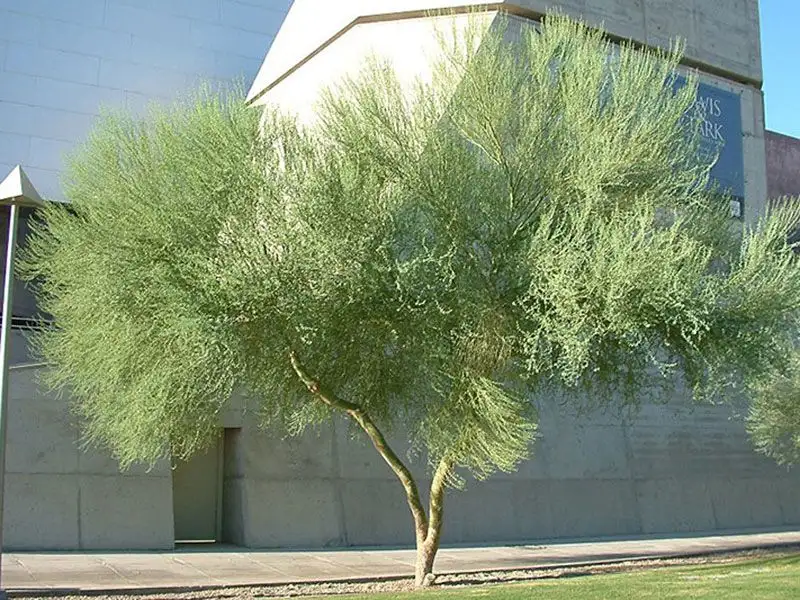
The Blue Palo Verde, with its striking green trunk and yellow blossoms, is a desert jewel. Found in Saguaro National Park, it thrives in arid conditions, providing food and shelter for local wildlife.
Its ability to photosynthesize through its bark is a unique adaptation to its environment. The vibrant spring blooms attract pollinators, adding life to the desert landscape. This tree is a testament to the creativity of evolution in designing resilient organisms.
Giant Kelp

Beneath the ocean’s surface off Channel Islands National Park, Giant Kelp forests sway with the currents. These underwater giants can grow up to two feet a day, creating dense marine forests.
They provide habitat and food for a myriad of marine species, playing a crucial role in the oceanic ecosystem. The kelp’s rapid growth and ability to harness sunlight illustrate nature’s ingenuity. Exploring these forests offers a glimpse into the rich biodiversity hidden beneath the waves.
Jack Pine
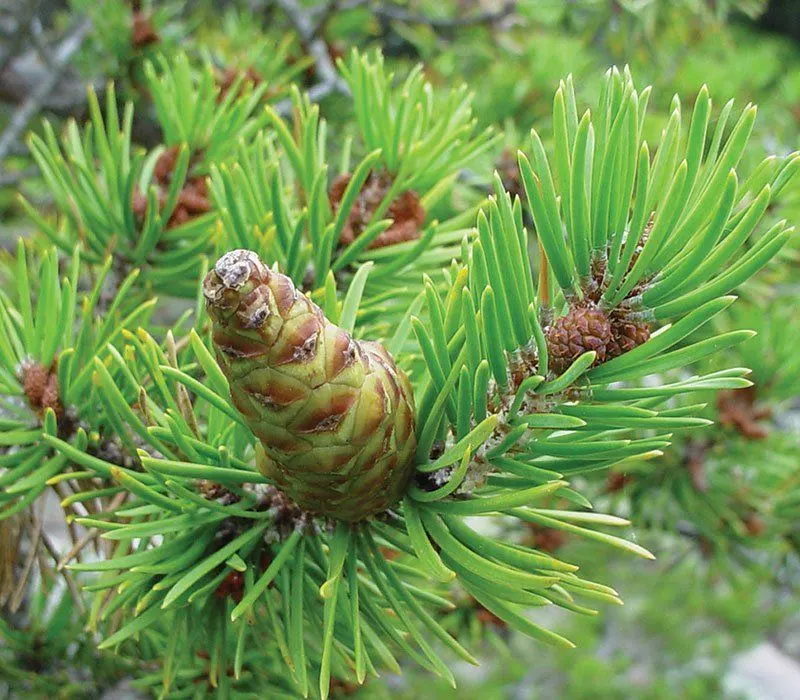
In the open forests of Isle Royale National Park, the Jack Pine stands as a survivor. With its slender trunk and needle-like leaves, it thrives in nutrient-poor soils.
This tree has adapted to fire-prone environments, with cones that open only after exposure to heat. Its presence is vital to the ecosystem, providing habitat and food for wildlife. The Jack Pine’s resilience is a testament to nature’s ability to adapt and thrive in challenging conditions.
Western Hemlock
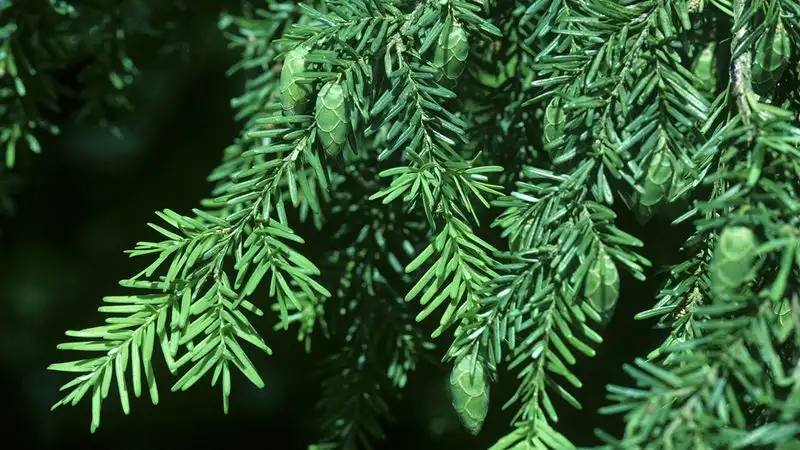
Found in the temperate rainforests of Olympic National Park, the Western Hemlock displays drooping branches and lush green foliage. This evergreen thrives in moist, shaded environments, contributing to the dense canopy of the forest.
Its wood is valued for its strength and versatility, often used in construction and paper production. The Western Hemlock’s presence is essential in maintaining the ecological balance of its habitat. Observing these trees offers an insight into the intricate web of life in temperate rainforests.
Fremont Cottonwood
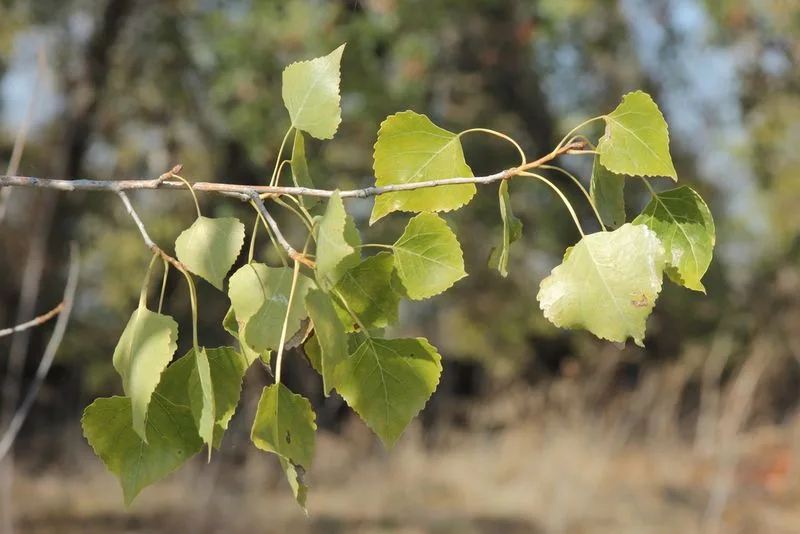
Standing by the riverbanks of Zion National Park, the Fremont Cottonwood exhibits broad leaves and distinctive white bark. This tree thrives in riparian areas, signaling the presence of water in arid landscapes.
Its deep roots stabilize the soil, preventing erosion, while its leaves provide shade and habitat for wildlife. The Fremont Cottonwood is a lifeline for many species, illustrating the interdependence of ecosystems. Its presence in the desert is a beacon of life and renewal.
Whitebark Pine
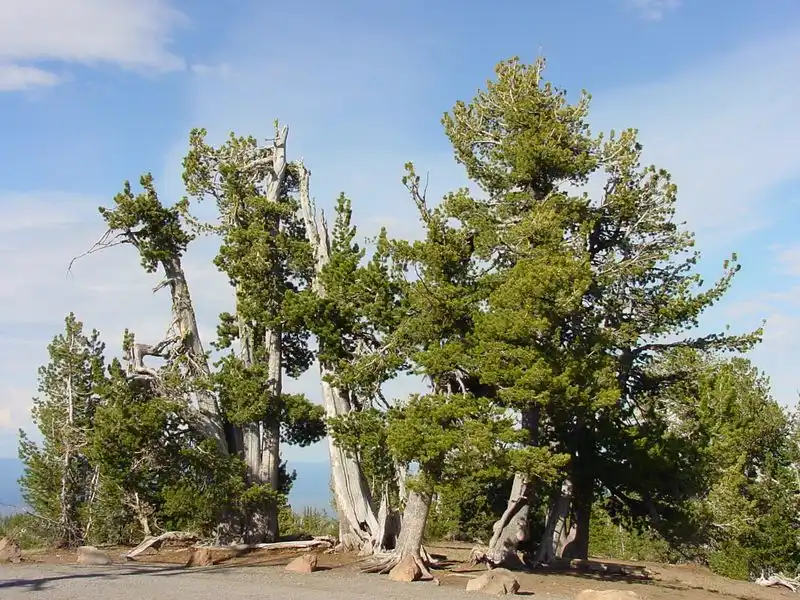
Perched on the rocky slopes of Yellowstone National Park, the Whitebark Pine is a symbol of perseverance. With twisted branches and clusters of cones, this tree thrives in harsh alpine conditions.
Its seeds are a crucial food source for various wildlife, including the Clark’s Nutcracker. The Whitebark Pine’s role in its ecosystem is vital, as it stabilizes soil and influences water cycles. Observing these trees highlights the resilience and interconnectedness of nature.
Bigleaf Maple
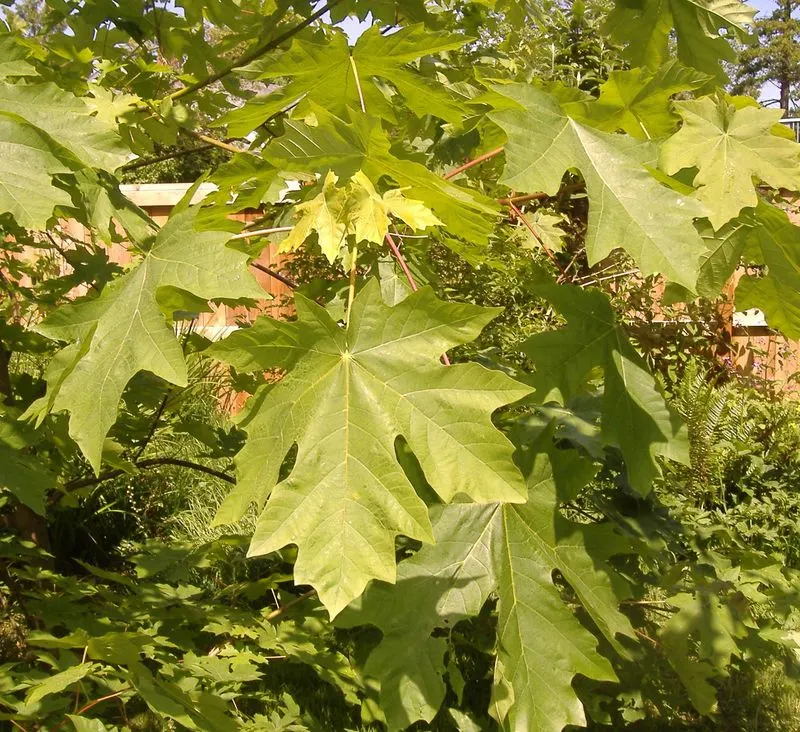
In the damp forests of Olympic National Park, the Bigleaf Maple makes its mark with its enormous leaves and moss-covered trunk. This tree thrives in moist environments, contributing to the lushness of the temperate rainforest.
Its leaves provide ample shade, fostering a diverse understory of plants and wildlife. The Bigleaf Maple’s presence is a reminder of the richness and diversity of life in these verdant landscapes. Strolling beneath these trees is a step into a world teeming with life.
Bishop Pine

Amidst the coastal fog of Point Reyes National Seashore, the Bishop Pine stands with slender branches and clustered needles. This tree thrives in the unique conditions of California’s coastal regions, where fog provides essential moisture.
Its ability to adapt to fire-prone environments ensures its survival and regeneration. The Bishop Pine is a vital component of its ecosystem, supporting various species with its presence. Observing these trees offers a glimpse into the delicate balance of coastal ecosystems.
Sitka Spruce
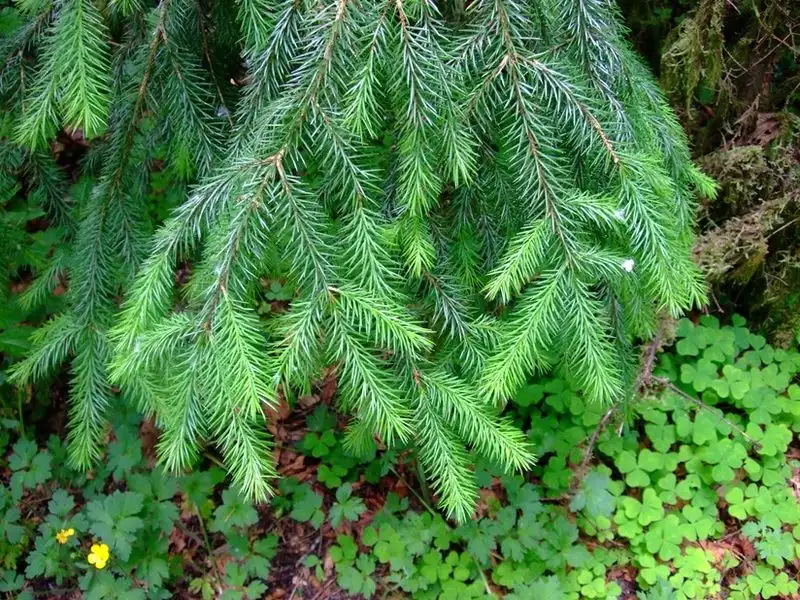
Towering over the rainforests of Tongass National Forest, the Sitka Spruce is a giant among trees. Its dense foliage and towering trunk create a canopy that shelters a diverse array of species.
Its wood is highly valued for its strength and resonance, often used in musical instruments. The Sitka Spruce’s presence is pivotal in maintaining the ecological balance of its habitat. Walking beneath these trees is an experience of awe, as nature’s grandeur unfolds around you.
Lodgepole Pine
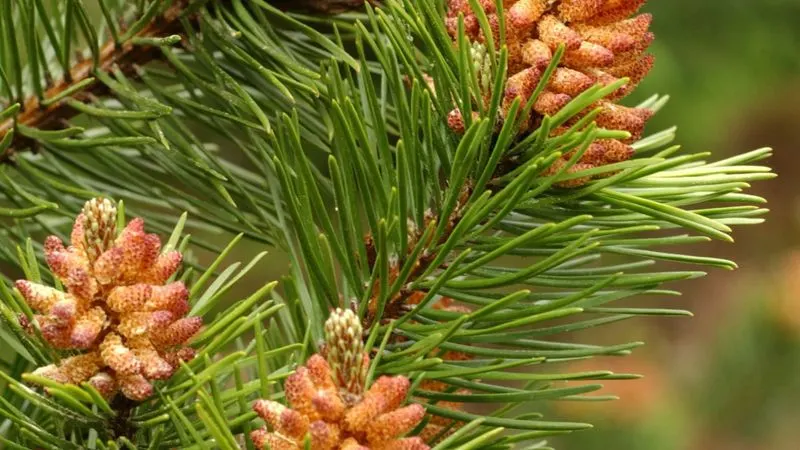
With a straight, slender trunk and needle-like leaves, the Lodgepole Pine is a familiar sight in Yellowstone National Park’s open forests. This tree is adapted to fire, with cones that release seeds only after heat exposure.
It plays a crucial role in its ecosystem, supporting wildlife and stabilizing soil. The Lodgepole Pine’s presence is a testament to nature’s resilience and ability to regenerate after disturbances. Witnessing these trees offers a glimpse into the cycles of life and renewal.
Ghostly Glowmoss

In the heart of the dense forests lies the ethereal Ghostly Glowmoss. Nestled on ancient rocks, this luminescent moss captivates with its eerie glow, especially under the moonlight. Its appearance is akin to nature’s own lantern, lighting up the forest floor with a soft, ghostly light.
Imagine walking through the woods and stumbling upon this otherworldly sight. The glowmoss isn’t just a feast for the eyes but also a vital part of the ecosystem, providing shelter for tiny insects and enriching the soil.
Did you know? This moss is a rare find, thriving only in undisturbed, moisture-rich environments.

